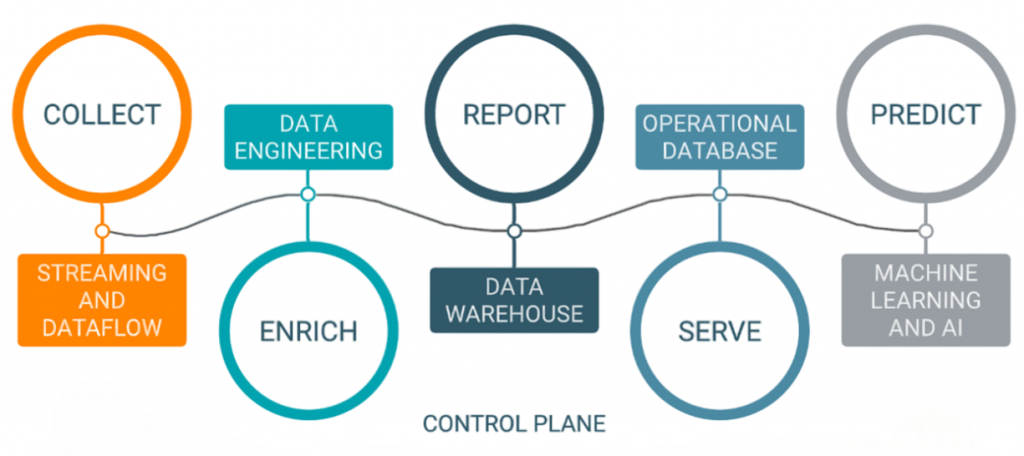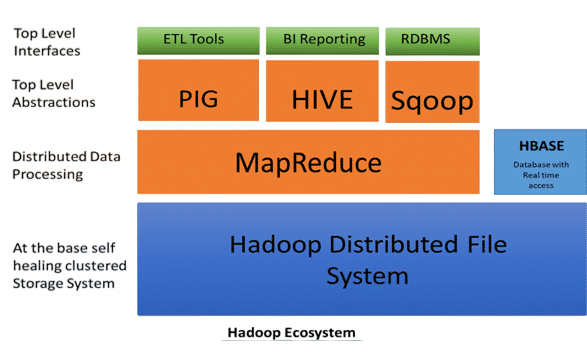
- Introduction to Cloudera
- Brief History of Hadoop
- Reasons the Creator of Hadoop
- Reasons for Joining Cloudera
- Role and Contributions at Cloudera
- Cloudera’s Big Data Vision
- Products and Innovation Pipeline
- Reactions from Industry
- Implications for Hadoop Ecosystem
- Summary
Introduction to Cloudera
Hadoop and Cloudera have been key players in the Big Data revolution, working together to make enterprise-level data processing a reality. Cloudera was founded in 2008 with the aim of bringing Hadoop’s capabilities to businesses. As one of the first commercial distributors of Hadoop, Cloudera played an important role in developing and expanding the Hadoop ecosystem. To build expertise in these foundational technologies, explore Data Science Training a hands-on program that equips professionals to work with distributed systems, scalable data pipelines, and enterprise-grade analytics platforms. The company offered a platform that combined Hadoop with essential features such as security, governance, and real-time analytics. Cloudera’s platform allowed businesses to use Big Data for insights that could drive innovation, improve operations, and enhance customer experiences. Over the years, Cloudera adapted to support hybrid and multi-cloud environments, adding tools like Apache Spark, Kafka, and machine learning capabilities, which established it as a leader in enterprise data platforms.
Brief History of Hadoop
Hadoop began as a project within the Apache Software Foundation, inspired by Google’s papers on the Google File System (GFS) and MapReduce. Originally developed by Doug Cutting and Mike Cafarella, Hadoop was designed to store and process large datasets in a distributed computing environment. The project was named after Cutting’s son’s toy elephant and has since become one of the most influential open-source frameworks for Big Data. Initially used to power the Apache Nutch search engine, Hadoop quickly evolved into a general-purpose system for distributed data storage and processing, revolutionizing data management in the enterprise world. To explore its evolution and enterprise impact, visit Big Data & Hadoop an in-depth article that breaks down core concepts, architectural strengths, and real-world applications across industries. By separating storage (via HDFS – Hadoop Distributed File System) and computation (via MapReduce), Hadoop provided a scalable solution for organizations dealing with massive data growth. Over time, the Hadoop ecosystem grew to include components like Hive, Pig, HBase, and YARN, expanding its capabilities beyond batch processing to include interactive querying and real-time analytics.
Interested in Obtaining Your Data Science Certificate? View The Data Science Online Training Offered By ACTE Right Now!
Reasons the Creator of Hadoop
- Doug Cutting is widely recognized as the co-creator of Hadoop and a pioneer in the Big Data community. With a background in search technologies, he had previously worked on projects like Lucene and Nutch. His contributions to open-source software have had a transformative effect on the field of data processing. To explore the skills and technologies that define this career path, visit How to Become a Big Data Analyst a comprehensive guide covering essential tools, learning strategies, and industry applications.
- After the initial success of Hadoop, Cutting joined Yahoo!, where he continued to develop the framework at scale. Under his guidance, Hadoop matured into a robust platform capable of supporting some of the largest data workloads in the world. His commitment to open-source principles and scalable data infrastructure made him a sought-after figure in the tech industry.
- Cutting’s decision to join Cloudera in 2009 was driven by his belief in the company’s mission to bring Hadoop to the enterprise. He recognized that while Hadoop had enormous potential, widespread adoption required a commercial partner to offer professional support, simplify deployment, and ensure integration with existing enterprise systems.
- Cloudera’s dedication to open-source innovation and its vision of creating an enterprise-grade data platform aligned closely with Cutting’s ideals. By joining Cloudera, he could influence the direction of the Hadoop ecosystem while ensuring that it remained open, scalable, and user-friendly.
- Cloudera Data Platform (CDP): A unified platform supporting on-premise, cloud, and hybrid deployments.
- Cloudera Machine Learning (CML): Tools for developing and deploying ML models.
- Cloudera Data Warehouse (CDW): Scalable, high-performance SQL analytics.
- DataFlow and Data Engineering: Support for streaming data and pipeline automation.
- Cutting’s shift to Cloudera marked a turning point in the Hadoop ecosystem. It symbolized the maturation of Hadoop from an academic experiment to an enterprise-ready platform. As Cloudera invested in user-friendly tools, support services, and security features, it made Hadoop accessible to a broader audience.
- To see how these innovations scale in real-world environments, visit How Facebook is Using Big Data an insightful article that explores how one of the world’s largest tech platforms leverages distributed systems for personalization, performance, and predictive analytics.
- His move also spurred other companies to invest in Hadoop, leading to the emergence of competitors like Hortonworks and MapR. This healthy competition accelerated the growth of the ecosystem, improved tooling, and encouraged innovation across the board.
To Explore Data Science in Depth, Check Out Our Comprehensive Data Science Online Training To Gain Insights From Our Experts!
Reasons for Joining Cloudera
Role and Contributions at Cloudera
At Cloudera, Doug Cutting served as Chief Architect, where he guided the company’s technical vision and helped shape the future of Big Data. His deep understanding of distributed systems and open-source communities enabled Cloudera to stay at the forefront of innovation. Cutting played a critical role in fostering collaboration between commercial interests and the open-source community. To build expertise in the technologies shaped by this collaboration, explore Data Science Training a hands-on program that equips professionals to work with open-source frameworks, scalable data systems, and enterprise-grade analytics solutions. He championed the development of new tools and standards that extended Hadoop’s capabilities, ensuring compatibility with other emerging technologies. His presence at Cloudera provided credibility and trust among customers and developers alike.
Gain Your Master’s Certification in Data Science Training by Enrolling in Our Data Science Master Program Training Course Now!
Cloudera’s Big Data Vision
Cloudera aimed to transform the way businesses manage and analyze data. Its platform promised to unify data engineering, data warehousing, machine learning, and analytics into a single, secure, and scalable architecture. This vision was rooted in the idea that enterprises needed to move beyond data silos and adopt platforms capable of handling the entire data lifecycle.

To explore the scale, complexity, and impact of these platforms, visit How big Is Big Data an in-depth article that breaks down volume thresholds, infrastructure demands, and the evolving definition of Big Data across industries. With Hadoop at its core, Cloudera expanded its ecosystem to include tools for real-time processing (Apache Kafka), interactive SQL querying (Impala), and advanced analytics (Apache Spark). Its enterprise data cloud approach positioned it as a comprehensive solution for data management, governance, and analytics.
Are You Preparing for Data Science Jobs? Check Out ACTE’s Data Science Interview Questions and Answers to Boost Your Preparation!
Products and Innovation Pipeline
Cloudera continued to innovate, offering products that met the evolving needs of enterprise customers. Key offerings included scalable data platforms, advanced security features, and real-time analytics tools. To explore the skills and technologies behind these innovations, visit How to Become a Hadoop Developer a detailed guide that outlines the core competencies, learning paths, and career opportunities in the Hadoop ecosystem.
These tools reflected Cloudera’s commitment to enabling data-driven decision-making while maintaining data security and governance.
Reactions from Industry
Doug Cutting’s move to Cloudera was met with enthusiasm and optimism. Industry experts saw it as a strategic win for Cloudera and a validation of its approach to enterprise data. Analysts noted that Cutting’s involvement would enhance Cloudera’s influence over the future of Hadoop and Big Data. Open-source advocates appreciated that Cutting remained committed to community development. To understand how these technologies continue to evolve, explore Hadoop Vs Apache Spark a detailed comparison that highlights their architectural differences, performance benchmarks, and use-case adaptability across industries. His presence reassured the developer community that Cloudera would continue to contribute to open-source projects and uphold the values of transparency and collaboration.
Implications for Hadoop Ecosystem

Summary
Hadoop and Cloudera represent one of the most important partnerships in the history of Big Data innovation. Doug Cutting’s move to Cloudera was more than just a new job; it sparked the broader use of Big Data in businesses. His technical leadership, along with Cloudera’s business vision, changed Hadoop from a testing framework into a key part of modern data systems. The teamwork between open-source innovation and business needs set an example for how new technologies can grow. To build expertise in these transformative platforms, explore Data Science Training a hands-on program that equips professionals to work with distributed systems, scalable analytics, and enterprise-grade data solutions. As data keeps increasing in size and significance, the insights from Hadoop and Cloudera will inform future progress in data engineering, management, and analytics. Looking back, Cutting’s choice to join Cloudera was crucial in guiding the direction of the entire Big Data industry.


